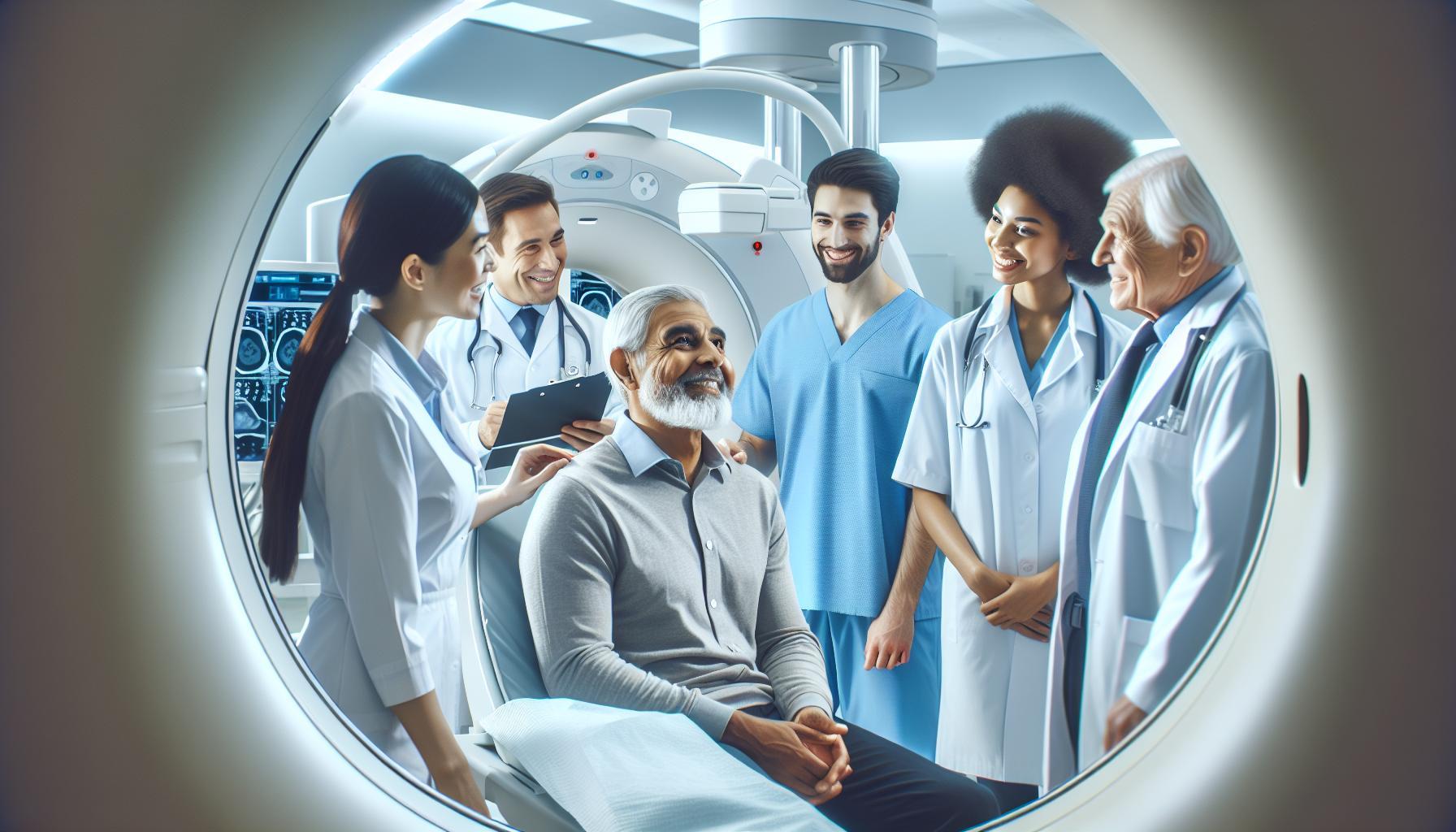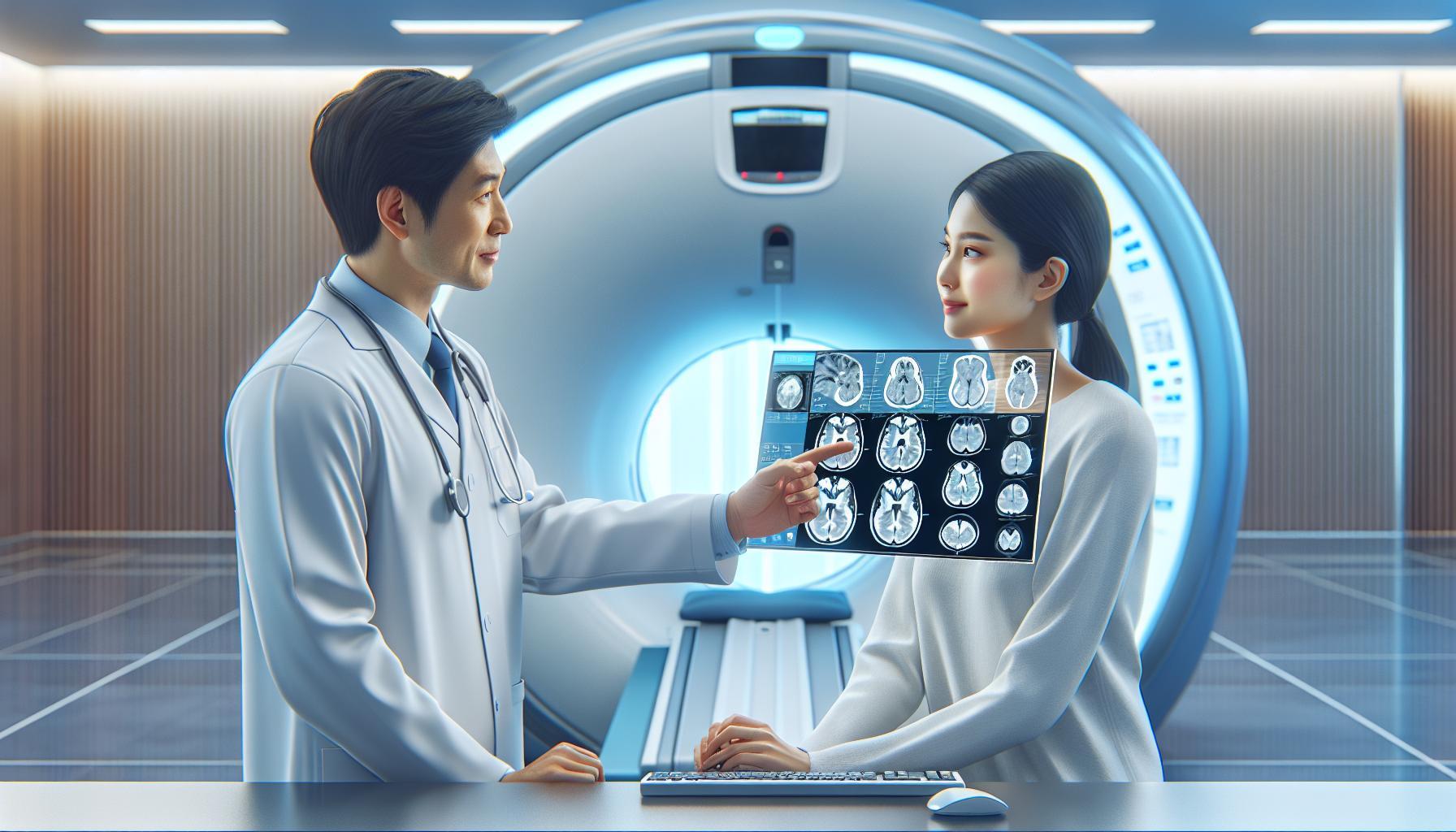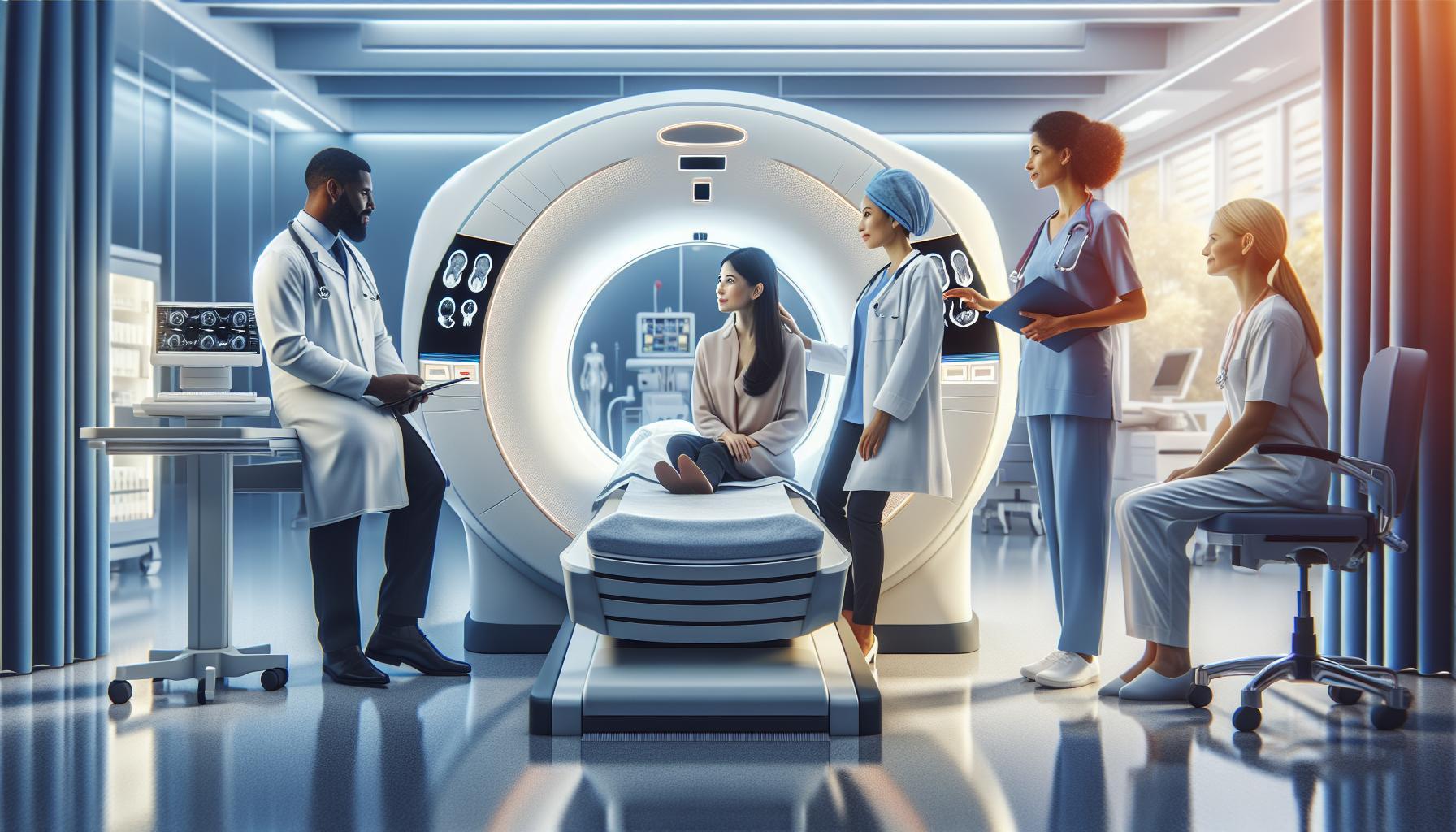When it comes to cancer detection, many patients find themselves wondering: does cancer show up on a CT scan? Understanding the role of imaging technology in identifying cancer can significantly impact your health journey. CT scans are powerful diagnostic tools that create detailed images of the body, helping doctors spot abnormalities that could indicate cancer.
As you explore this topic, it’s essential to recognize that the prospect of a cancer diagnosis can be daunting. Knowing more about how a CT scan works, what it can reveal, and its limitations may empower you to engage proactively with your healthcare provider. By delving into the specifics of CT scans and cancer detection, you can gain valuable insights that not only alleviate anxiety but also guide informed discussions with your medical team. Let’s unravel the truth about CT scans and their vital role in cancer detection.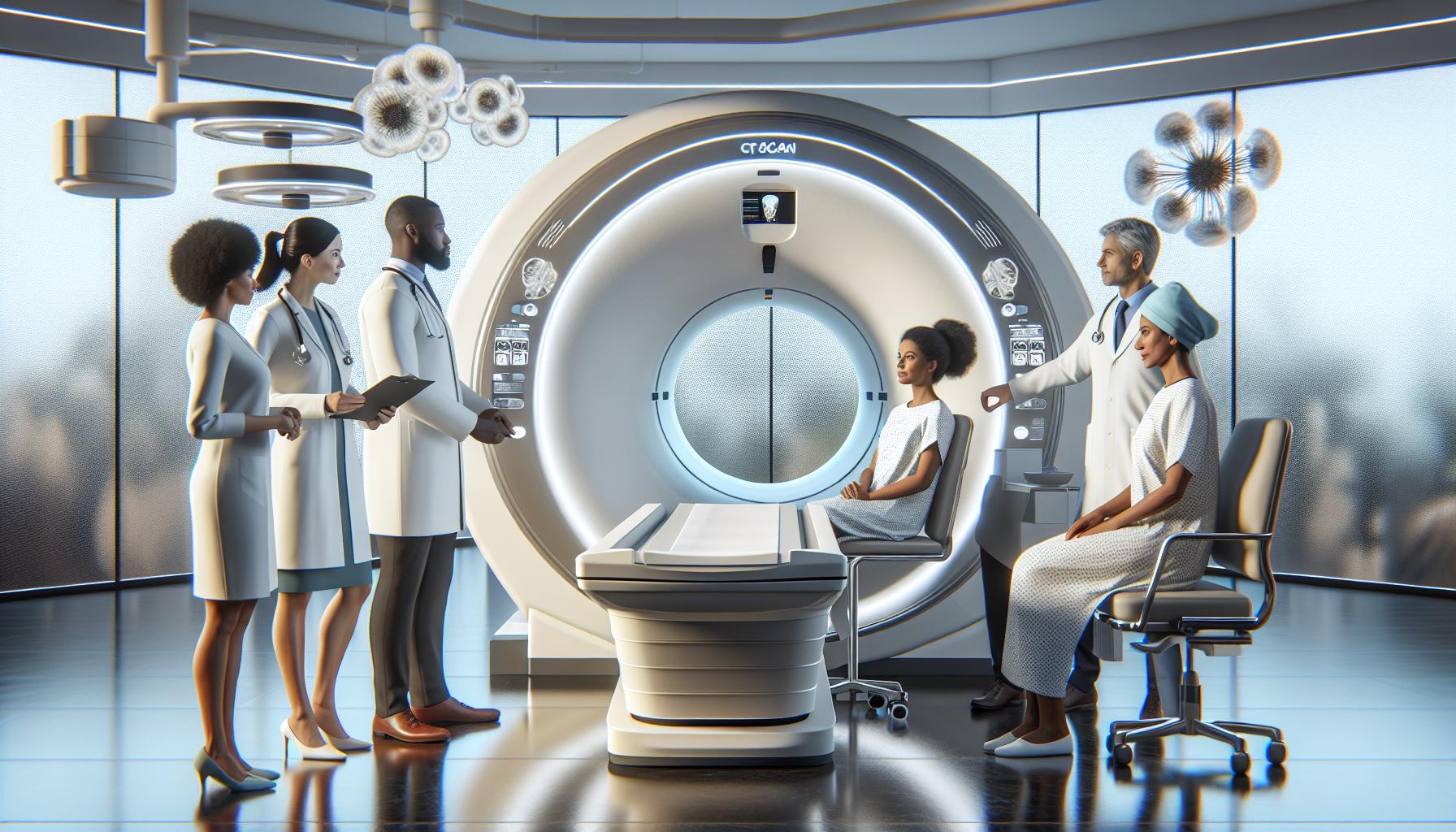
Understanding CT Scans: How They Detect Cancer
A CT scan, or computed tomography scan, is an advanced imaging technology that plays a crucial role in the detection of various health conditions, including cancer. Utilizing a series of X-ray images taken from different angles, this non-invasive procedure allows doctors to visualize the internal structures of the body in intricate detail. The scan combines these images to produce cross-sectional views, providing a comprehensive look at organs, tissues, and abnormalities. This unique ability makes CT scans invaluable in the early diagnosis and monitoring of cancer, particularly in areas where cancerous lesions may be difficult to detect using traditional X-rays.
When cancer cells proliferate in the body, they typically form masses or tumors. CT scans are particularly effective at identifying such formations because they can distinguish between different types of tissues based on density. Tumors often appear as denser than surrounding healthy tissue on the images, allowing radiologists to pinpoint their location, size, and potentially even the type (malignant or benign). Additionally, CT scans are not limited to just the identification of tumors; they can also reveal other signs indicative of cancer, such as swollen lymph nodes, organ enlargement, or abnormalities in blood vessels.
However, it’s essential to understand that while CT scans are incredibly informative, they are not foolproof. The effectiveness of a CT scan in detecting cancer depends on several factors, including the type of cancer, its location, and its stage. Some cancers may not present visible signs on a CT scan until they have significantly progressed. Therefore, CT scans are often used in conjunction with other diagnostic methods, such as biopsies or MRIs, to formulate a comprehensive overview of a patient’s condition. Always consult with a healthcare professional to interpret results and discuss the best course of action if cancer is suspected.
Regular follow-ups with your doctor, especially if you have risk factors for cancer, can lead to earlier detection, improving treatment outcomes. Understanding how CT scans work and their role in cancer detection empowers patients to ask informed questions and take an active role in their healthcare decisions.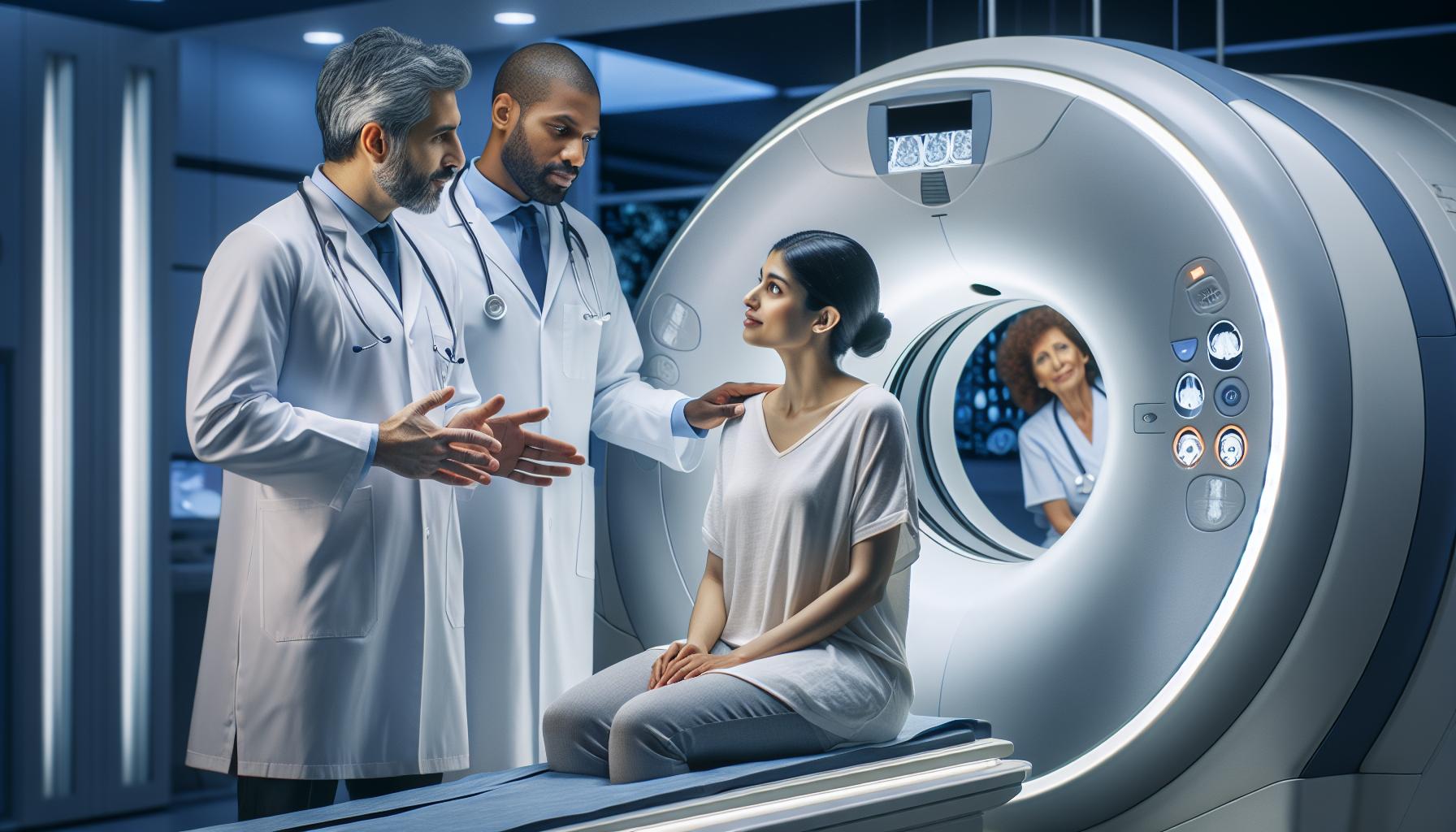
The Role of CT Scans in Cancer Diagnosis
In the landscape of cancer diagnosis, computed tomography (CT) scans offer a window into the human body that traditional X-rays cannot provide. These advanced imaging techniques make it possible to visualize the internal architecture of organs, tissues, and potential tumors with remarkable clarity. When a healthcare provider suspects cancer, a CT scan can be one of the first diagnostic tools employed, providing critical information that guides further evaluation and treatment.
CT scans excel in identifying abnormalities in dense tissues, making tumors more visible against the surrounding structures. These scans produce cross-sectional images that allow radiologists to assess not just the presence of tumors but also their size and shape, which can be significant indicators of whether a tumor is benign or malignant. For example, a tumor that appears irregularly shaped might raise more concern than a smooth, symmetrical one. Moreover, CT scans can reveal important contextual signs such as swollen lymph nodes or changes in the surrounding tissue, all of which provide essential clues in the cancer diagnosis process.
It’s important to approach CT scans with a balanced perspective. While they are an excellent tool for early detection, they are not infallible. The success of a CT scan in diagnosing cancer can depend heavily on factors such as the nature of the cancer, its location, and its stage of development. In some cases, particularly with smaller tumors or those located in complex anatomical areas, the scan may not show visible signs until the disease has progressed. This highlights the importance of using CT scans as part of a broader diagnostic arsenal, often in conjunction with physical examinations, lab tests, and other imaging studies.
For patients, understanding can help demystify the process and alleviate anxiety about the unknown. Educating oneself about what to expect before, during, and after a CT scan can empower patients to engage more effectively with their healthcare team. Discussing concerns and questions with a doctor before the procedure, as well as after receiving results, is crucial. This collaboration fosters a well-rounded understanding of one’s health status, facilitating timely and appropriate action.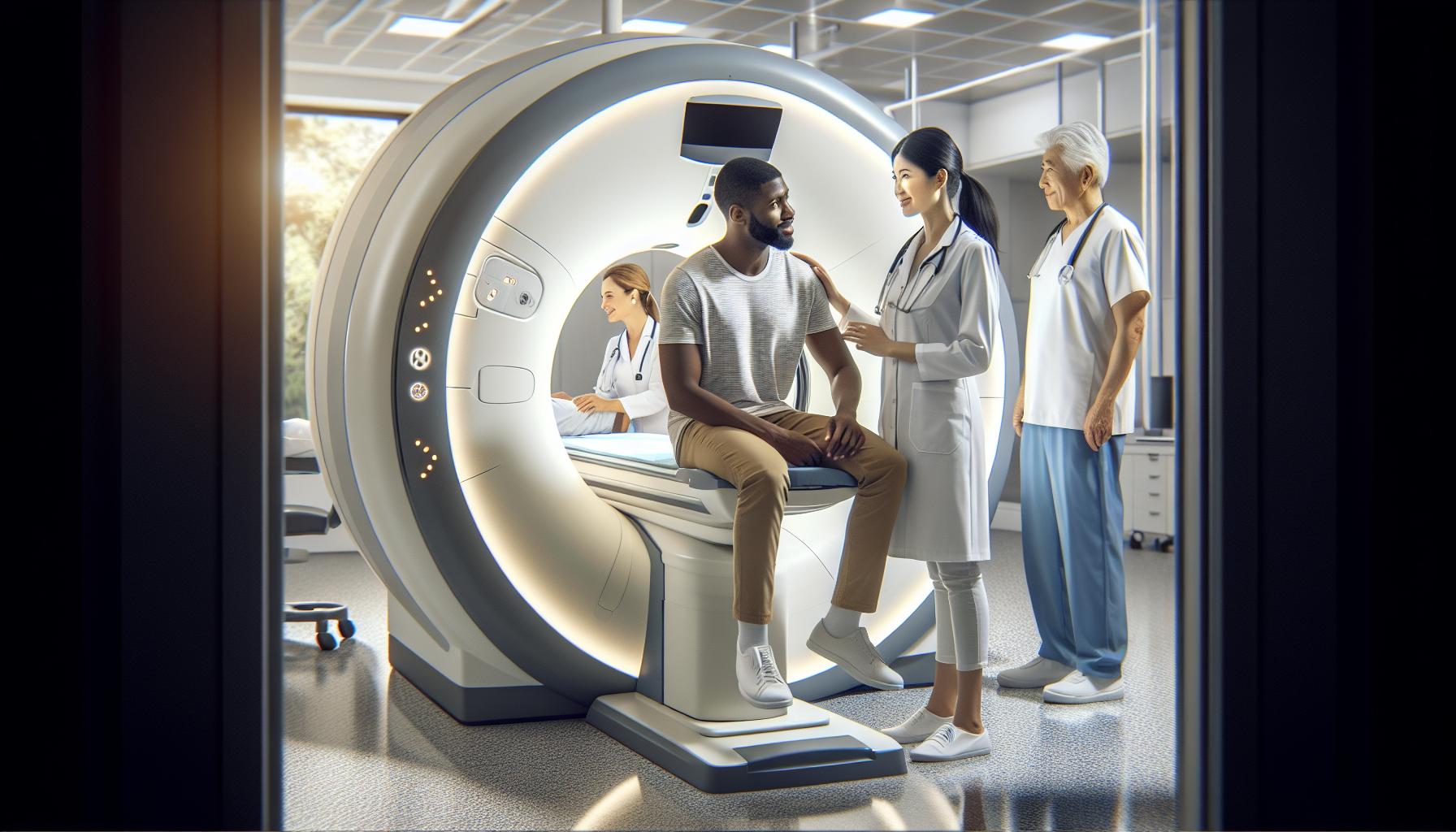
What Can a CT Scan Reveal About Your Health?
CT scans are an invaluable tool in modern healthcare, often serving as a crucial component in diagnosing a variety of medical conditions, especially cancer. By providing detailed cross-sectional images of the body, these scans enable healthcare providers to visualize internal structures with remarkable clarity. This visualization capability is essential not only for detecting tumors but also for evaluating their size, shape, and location, all of which can offer important insights into the nature of the growth and its potential implications for your health.
A CT scan can reveal a myriad of health issues beyond simply identifying tumors. For instance, it can highlight abnormal masses, fluid collections, or even signs of infections. Radiologists often look for specific characteristics that may indicate whether a growth is benign or malignant. As an example, irregularly shaped tumors or those with distinct features might signal a higher risk of cancer. Additionally, CT scans can uncover the presence of enlarged lymph nodes, which may indicate a spread of disease, or changes in surrounding tissues that could suggest the inflammation associated with various medical conditions.
It’s also important to recognize that while CT scans are powerful diagnostic tools, they have limitations. Certain cancers, particularly those in early stages or located in challenging anatomical areas, may not be visible on a CT scan. This underscores the necessity of a comprehensive diagnostic approach. Follow-up imaging, laboratory tests, and clinical assessments are vital to forming a complete picture of a patient’s health status.
For patients preparing for a CT scan, knowledge is empowering. Understanding that this procedure can provide critical insights can alleviate anxiety. Discussing your health history and any concerns with your healthcare provider prior to the scan will ensure you receive tailored care and clear communication about your results. By fostering an open line of dialogue with your medical team, you can better understand the implications of your scan and make informed decisions about your health moving forward.
Limitations of CT Scans in Cancer Detection
While CT scans are pivotal in diagnosing and monitoring cancer, it is crucial to understand their limitations. Not all cancers are easily visible on a CT scan, particularly in their early stages or if they are positioned in difficult-to-scan areas of the body. For instance, small tumors might be masked by overlapping structures or obscured by surrounding tissues, making them challenging to detect. Moreover, some cancer types, such as those that do not significantly alter the anatomical structure of the tissue, may evade detection altogether. This reality emphasizes the need for a comprehensive approach to cancer diagnosis, where CT scans are used alongside other diagnostic tools, including MRI, PET scans, and biopsies.
Another drawback of CT scans is the potential for false positives. Radiologists may identify a suspicious mass that appears indicative of cancer but, upon further examination, is found to be benign. This can lead to unnecessary stress, additional testing, and sometimes invasive procedures for patients. It is essential for patients to have open discussions with their healthcare providers to clarify results and understand the context of the findings.
Additionally, the quality of a CT scan can vary significantly based on factors like the equipment used and the expertise of the radiologist interpreting the images. Advances in technology continue to improve the accuracy of CT imaging, yet it remains vital to consider other clinical information, such as patient symptoms and history, when making a diagnosis. A multidisciplinary approach fosters a more accurate understanding of a patient’s health and contributes to better treatment outcomes.
Patients should also be aware of potential exposure to radiation during CT scans. While the risk is generally low and the benefits often outweigh this concern, discussing the necessity and alternatives to CT scans can help reduce anxiety for those wary of radiation exposure. Understanding that no single test can provide a definitive diagnosis empowers patients to engage actively in their healthcare decisions and reinforces the importance of ongoing dialogue with their healthcare team.
Preparing for Your CT Scan: A Patient’s Guide
Preparing for a CT scan can be a crucial step in your healthcare journey, especially if you’re undergoing screening for potential illnesses like cancer. Understanding what to expect and how to prepare can significantly alleviate any anxiety you may have about the process. Here’s a comprehensive guide to help you navigate this important procedure.
Before your CT scan, you will likely receive specific instructions from your healthcare provider. It’s essential to follow these guidelines closely, as they can vary depending on the area being scanned. Here are some common preparation steps:
- Fasting: Depending on the type of CT scan, you may need to fast for several hours prior. This is particularly important for scans involving contrast material, which enhances the clarity of images.
- Hydration: Staying hydrated is vital, but you might be advised to limit or avoid certain beverages, especially if they contain caffeine or sugar.
- Medication Review: Inform your doctor about any medications you’re currently taking. Some, such as blood thinners, may require adjustment before the scan.
- Clothing: Wear comfortable, loose-fitting clothing without metal zippers, buttons, or jewelry, as these can interfere with imaging.
- Discuss Allergies: If you have allergies, particularly to iodine or contrast material, talk to your healthcare provider beforehand.
On the day of the scan, arriving early can reduce your stress. Upon arrival, you’ll be asked to complete any necessary paperwork and may have a chance to discuss your concerns with the radiology staff. They are there to assist you and will explain each step of the procedure to ensure you feel comfortable.
During the CT scan, you will lie down on a table that slides into the CT scanner, which is a large, donut-shaped machine. It’s important to stay still as the machine takes various images of your body. Most scans take only 10 to 30 minutes, and you will be able to communicate with the technician throughout the process.
After your scan, you will be free to resume your normal activities unless instructed otherwise. Discussing any follow-up steps or understanding when to expect your results with your healthcare provider can help ease concerns and keep you informed. Preparing for a CT scan doesn’t have to be daunting; equipping yourself with knowledge can make the experience significantly smoother and more reassuring.
What to Expect During a CT Scan Procedure
Undergoing a CT scan can be a crucial moment in your healthcare journey, especially when assessing for conditions such as cancer. As you prepare for this scanning procedure, understanding what will happen can help ease any anxiety you may have. With a CT scan, you’ll be lying on a moving table that glides into a large, donut-shaped machine. This machine uses X-rays to create detailed images of your body’s internal structures, providing invaluable insights into potential health issues.
Before the scan begins, it’s essential that you remain still-this ensures the most accurate images are captured. The scan itself typically takes just a few minutes, although the entire appointment may last up to 30 minutes, especially if you’re receiving a contrast material to enhance image clarity. You might be asked to hold your breath for short periods while images are taken, which helps in obtaining clearer pictures of the area of interest. Throughout the process, you can communicate with the technician, who will guide you on what to expect and reassure you during the procedure.
For many patients, the thought of being in a confined space can be intimidating. If you’re feeling claustrophobic, it’s important to express these concerns to the staff beforehand. They can offer open communication and reassurance during the scan. After the procedure, you can typically resume your normal activities immediately, unless specific instructions are given. Knowing what to expect during your CT scan can empower you, transforming what may be a daunting experience into a manageable one. Remember, discussing the results with your doctor afterward is critical, as they will help you interpret the findings and determine the next steps in your care.
Interpreting CT Scan Results: Understanding the Report
Understanding your CT scan results can feel overwhelming, especially when the stakes are high and the context involves determining the presence of cancer. The report generated from a CT scan provides crucial insights, detailing various aspects of the internal structures of your body. It describes any anomalies or abnormalities detected during the imaging, measured in the context of your overall health and medical history. Each element of the report gives important clues to your healthcare provider about what might be happening internally.
When reviewing your CT scan report, pay attention to the following key sections:
- Findings: This section lists any abnormalities such as masses, lesions, or tumors. The radiologist will often categorize these findings to indicate whether they are benign or could be potential indicators of cancer.
- Comparison: If prior scans were conducted, this section compares the current images to past ones. Changes over time can provide critical information about the nature of a detected anomaly.
- Impression: This is typically a summary of the findings and the radiologist’s professional interpretation, including recommendations for further evaluation or follow-up scans.
It may help to approach your report as a tool for dialogue with your healthcare provider. Ask for clarification on any terms or findings that you don’t understand. For instance, questions such as “What do these measurements mean?” or “How does this relate to my symptoms?” can pave the way for a clearer understanding. Moreover, consider bringing a family member or friend to your appointment to help remember the details and provide emotional support.
Finally, recognize that while CT scans are powerful diagnostic tools, they are just one part of the larger picture. The results are interpreted within the context of your overall health, lifestyle, and risk factors. Your doctor will work with you to piece together all this information, ensuring you receive the most appropriate care based on a comprehensive view of your health. Empower yourself by staying informed and engaged in your healthcare journey, always remembering to seek professional guidance for personalized advice tailored to your specific situation.
Advancements in CT Technology for Cancer Screening
Recent advancements in CT technology are transforming the landscape of cancer screening, making it more effective and accessible than ever. High-definition imaging, advanced algorithms, and the integration of artificial intelligence (AI) have enhanced the precision of scans, allowing healthcare providers to detect abnormalities at much earlier stages. For patients, this means a greater chance of early diagnosis, which is often critical for successful treatment outcomes.
One notable development is the rise of low-dose CT scans, particularly in lung cancer screening for high-risk populations, such as current and former smokers. These scans significantly lower radiation exposure while maintaining image quality, thereby reducing the long-term risks associated with repeated screenings. By utilizing advanced imaging techniques, such as iterative reconstruction and model-based algorithms, these scans can highlight minute changes in lung tissue, which may indicate early signs of cancer when treatment is most likely to be effective.
Integrated Systems and AI in CT Scanning
Another exciting enhancement in CT technology lies in the integration of AI and machine learning. These tools help radiologists interpret scans more accurately and efficiently by identifying patterns that might be overlooked by the human eye. For example, AI can assist in quantifying tumor sizes or changes over time, providing more reliable comparisons between previous scans and current images. This capability is invaluable for monitoring the progression of cancer or the response to treatments.
Patient-Centric Innovations
In addition to technological advances, patient experience during CT scans is also improving. Many facilities now offer more comfortable and less intimidating settings, along with more straightforward patient instructions. Some institutions have adopted “open” CT machines, which can alleviate anxiety for claustrophobic patients. These patient-focused innovations help create a more reassuring environment, acknowledging that many individuals may feel anxious before undergoing cancer-related procedures.
In essence, these advancements not only enhance the capability of CT scans in detecting cancer but also prioritize the comfort and experience of the patient. As technology continuously evolves, it’s crucial for patients to stay informed and consult with their healthcare providers on the best screening options available for their specific health needs.
When to Consider a CT Scan for Cancer Symptoms
When you experience unusual symptoms that cause concern, it can be challenging to decide when to seek medical imaging, such as a CT scan. Detecting cancer early often makes a significant difference in treatment outcomes. Therefore, understanding the right moment to consider a CT scan is crucial. If you’re experiencing persistent symptoms like unexplained weight loss, frequent fevers, fatigue, or pain that doesn’t seem to have a clear cause, it’s wise to discuss the possibility of a CT scan with your healthcare provider. These early signs may warrant further investigation, especially if they do not improve over time.
Often, physicians recommend CT scans for specific situations where cancer is suspected based on your symptoms or risk factors. For example, if you have a personal or family history of cancer or if you belong to a high-risk group (like smokers for lung cancer), a CT scan may be a proactive step. Moreover, if your physician feels that a physical examination, blood tests, or other imaging methods, like X-rays or MRIs, have not provided sufficient answers, they may propose a CT scan to get a more detailed look at the structures inside your body.
Examples of Symptoms Warranting a CT Scan
Considering a CT scan may be appropriate if you experience:
- Unexplained mass or lump: Any new lumps in the body, particularly in the abdomen or neck, can be concerning.
- Ongoing cough or respiratory issues: A persistent cough or difficulty breathing could indicate lung-related issues that a scan might identify.
- Changes in bowel or bladder habits: Persistent changes in these habits can signal gastrointestinal or urinary tract issues.
- Severe headaches or vision changes: New, severe headaches or sudden vision changes might require a CT for potential neurological evaluation.
Before opting for a CT scan, it’s important to have an open conversation with your healthcare provider. They can help interpret your symptoms in the context of your overall health, discuss the potential risks and benefits, and determine whether a CT scan is indeed the right choice for you in this particular situation. Keeping the lines of communication open will ensure you feel supported and informed throughout your healthcare journey.
Alternatives to CT Scans for Cancer Detection
While CT scans are a powerful imaging tool in cancer detection, they are not the only option available. Patients concerned about their health have several alternatives that can provide valuable insights into potential issues. Understanding these options can help you make informed decisions alongside your healthcare provider.
One commonly used alternative is Magnetic Resonance Imaging (MRI). Unlike CT scans, MRIs utilize strong magnetic fields and radio waves to create detailed images of organs and tissues. This method can be particularly beneficial in visualizing soft tissues, making it an excellent choice for brain, spinal, and some abdominal cancers. MRIs do not involve radiation, which can be a significant advantage for patients who require multiple imaging tests.
Another alternative is Ultrasound, which uses sound waves to produce images of organs inside the body. It’s particularly advantageous for examining organs in real-time and can help reveal abnormalities such as tumors or growths without exposing patients to radiation. Ultrasound is often used in combination with other tests, especially in evaluating cancers of the breast or pelvis.
Positron Emission Tomography (PET) scans are also frequently paired with CT scans to enhance diagnostic accuracy. PET scans can detect metabolic activity, providing a different perspective on cancerous tissues compared to structural imaging from CT and MRI. This method is useful for assessing how active cancer cells are and can aid in treatment planning.
When considering these alternatives, it’s crucial to discuss them with your healthcare provider. They can guide you through the benefits and limitations of each imaging technique based on your specific symptoms and medical history. As with any medical decision, your comfort and understanding are paramount, and staying informed about your options enables you to participate actively in your healthcare journey.
Cost of CT Scans: What You Need to Know
The financial aspect of undergoing a CT scan can often be a source of concern for patients, yet understanding the costs involved can help ease anxiety and promote informed decision-making. The price of a CT scan can vary widely based on several factors, including the type of scan, the facility where it’s performed, and whether the patient has insurance coverage.
Generally speaking, the cost of a CT scan ranges from $300 to $3,000. This broad range reflects the differences in geographic location, the complexity of the scan, and the inclusion of additional fees for consultations or associated services. For instance, a simple abdominal scan may cost significantly less than a CT scan that requires contrast dye injections or advanced imaging techniques.
Insurance Coverage and Out-of-Pocket Expenses
Many health insurance plans cover CT scans, but the extent of coverage can differ. Patients are encouraged to check with their insurance provider to understand their plan’s specifics regarding coverage limits, deductibles, and copay amounts. When scheduling a scan, it’s wise to inquire about the total estimated costs and clarify any potential out-of-pocket expenses. In many cases, facilities can provide a detailed estimate of costs upfront, helping patients prepare financially.
Strategies for Managing CT Scan Costs
To alleviate financial strain, patients can consider several strategies:
- Shop Around: Compare prices at different imaging centers and hospitals. Some facilities offer discounts or payment plans for uninsured patients.
- Discuss with Your Doctor: Speak with your healthcare provider about the necessity of the scan and whether a less expensive imaging alternative might be appropriate.
- Financial Assistance Programs: Investigate whether the hospital or imaging center has financial assistance options available for those with limited income or under high financial stress.
By approaching the topic of cost proactively, patients can reduce their stress and focus on what matters most-their health and well-being. Always consider discussing financial concerns with a healthcare professional, as they can provide additional guidance tailored to individual circumstances and needs.
How to Discuss CT Scan Results with Your Doctor
Discussing CT scan results with your doctor can be a pivotal moment in your healthcare journey, especially when concerns about cancer are involved. Having a clear understanding of your scan’s implications is essential, not only for your peace of mind but for making informed decisions about your health moving forward. Begin by preparing a list of key questions you want to ask during your appointment. Consider inquiries such as, “What did the results show?” and “What are the next steps based on these findings?” This proactive approach demonstrates your engagement in the process and helps ensure you gather all necessary information.
During the discussion, it’s beneficial to take notes or bring a trusted friend or family member for support. Sometimes, it can be overwhelming to absorb medical information, so having someone alongside can help you process what’s being said. Ask your doctor to clarify medical jargon or any aspects of the report that you find confusing. It’s perfectly acceptable to ask for a simpler explanation or additional context around specific terms or findings. Remember, your healthcare provider is there to guide you, and fostering an open dialogue will lead to better understanding and collaboration.
It’s important to discuss what the results mean in the context of your overall health and any symptoms you may be experiencing. If the CT scan indicates something concerning, ask about what follow-up tests or procedures are recommended. Conversely, if the results are reassuring, inquire about monitoring or lifestyle changes that can further support your health. This conversation is not just about interpreting results-it’s also about strategizing a proactive care plan tailored to your individual circumstances.
Additionally, don’t hesitate to express any fears or concerns you may have regarding the results or your health in general. Acknowledging these emotions can help create a more empathetic dialogue with your physician, grounding the discussion in both medical facts and personal experiences. Finally, ensure you leave with a clear understanding of the next steps, whether that includes scheduling additional tests, follow-up appointments, or lifestyle modifications, to empower yourself as an active participant in your healthcare journey.
Faq
Q: Can a CT scan miss cancer?
A: Yes, a CT scan can miss cancer, especially in early stages or in certain types of tumors that may not be easily identifiable. It’s important to discuss any symptoms you experience with your healthcare provider and consider additional imaging if needed.
Q: What types of cancer can be detected by a CT scan?
A: CT scans are effective in detecting various types of cancer, including lung, liver, kidney, and some pancreatic cancers. They are commonly used to monitor existing cancers and check for metastasis.
Q: How does a CT scan compare to an MRI for cancer detection?
A: CT scans use X-rays and are best for visualizing bone and lung tissue, while MRI uses magnetic fields, making it better for soft tissue details. The choice between the two depends on the area of concern and the type of cancer.
Q: What should I do if my CT scan shows suspicious results?
A: If your CT scan shows suspicious results, consult your doctor for further evaluation. They may recommend additional tests, such as a biopsy or MRI, to confirm the diagnosis and determine the next steps.
Q: How accurate is a CT scan in detecting cancerous lesions?
A: CT scans are generally accurate but can vary in sensitivity. Factors like the size and type of the lesion can affect detection. Smaller lesions may be missed, so follow-up imaging may be warranted.
Q: Why might my doctor recommend a CT scan instead of other imaging tests?
A: Doctors may recommend a CT scan due to its speed, availability, and ability to provide detailed cross-sectional images of internal organs, making it particularly useful for assessing certain types of cancer.
Q: What are the risks associated with CT scans for cancer detection?
A: The primary risk of CT scans is exposure to radiation, which could potentially increase cancer risk over time. However, the benefits of accurate cancer detection often outweigh these risks, especially for symptomatic patients.
Q: How can I prepare for a CT scan to increase its effectiveness?
A: Preparing for a CT scan may include fasting for a few hours prior if contrast material is used. Follow your doctor’s instructions closely to ensure the best possible images are obtained for accurate analysis.
For more detailed information about CT scans and their role in cancer detection, explore the sections on “Understanding CT Scans: How They Detect Cancer” and “Limitations of CT Scans in Cancer Detection” in the main article.
Future Outlook
Understanding whether cancer can show up on a CT scan is essential for your health journey. Remember, while CT scans are powerful tools for detecting abnormalities, they may not capture all types of cancer, particularly in early stages. If you’re feeling uncertain or anxious about your health, don’t hesitate to contact a healthcare professional for personalized guidance. Explore more about CT scan preparation and safety measures in our detailed guides linked below.
Before you go, take a moment to subscribe to our newsletter for the latest insights on medical imaging and cancer detection. If you found this information useful, consider sharing it with friends or family who might benefit. Your health awareness is crucial, so let’s continue this conversation! Check out our articles on “Understanding Cancer Types” and “Preparing for Your First CT Scan” for further insights. Remember, your journey doesn’t end here-empower yourself with knowledge and stay informed!

